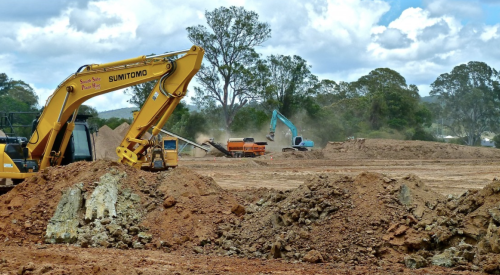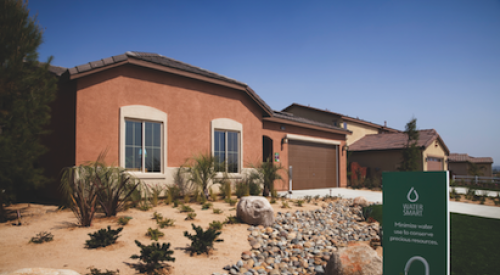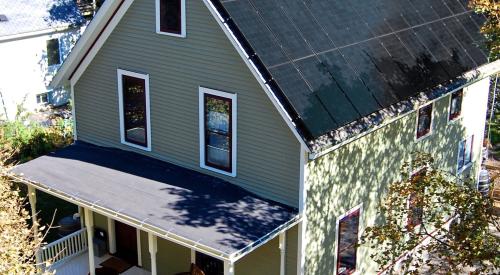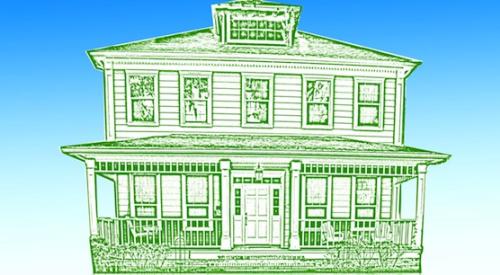When it comes to calculating buying power, little changed during the last half-century in the way home buyers and their lenders sized up housing options. A simple PITI calculation - principal, interest, taxes and insurance - brought everyone to the same "first cost," a hard number quantifying the financial commitment homeownership demands. PITI remained an unchallenged measuring stick for the cost of a home, and the bidder's financial profile provided a more or less obvious answer about ability to buy.
But during the past few years, a new trend has emerged. Innovative technologies that can dramatically improve a home's energy efficiency, coupled with growing concern about rising energy costs, have given rise to a more inclusive formula for measuring the cost of owning a home that better reflects the true costs.
Mortgage payments don't exist in a vacuum. The monthly outlay also includes operating expenses and the cost of routine maintenance. Just as carmakers tout the energy efficiency of their new hybrid vehicles, savvy builders now court the still largely untapped gold mine of home buyers looking to quantify the value a home represents.
|
||||||||||||||||||||||||||||||||||
|
||||||||||||||||||||||||||||||||||
To demonstrate the market appeal of the affordable, innovative home, PATH is sponsoring the 2004 NextGen Demonstration Home at the International Builders' Show in Las Vegas. This Energy Star-qualified, modular home would cost an estimated $150,000 in the typical U.S. market, excluding lot costs.
Visitors to the 2,300-square-foot, single-story home will be asked to weigh cost against value as they examine the home's advanced technologies, with their associated benefits of energy efficiency, durability and safety. The tables above break down the average costs of key performance-related technologies and their corresponding energy savings.
This more inclusive perspective on housing costs, sometimes called life-cycle costs, offers quality builders a great opportunity to sell energy-efficiency and durability features that distinguish their homes from competitors' homes.
"You have to make it meaningful for home buyers," says Vernon McKown, co-owner and sales president of Ideal Homes in Norman, Okla. "Break it down for them that their cost of monthly operations is just as relevant as their monthly mortgage payment. We ask, ‘Is energy efficiency important to you?' and 80% give the socially correct answer. Then we ask, ‘Would you be interested in saving 20-30% on your energy bills?' Bingo. Now they're interested."
As builders move beyond the first tier of efficiency and durability practices and integrate advanced technologies that raise their homes' first cost, effective life-cycle cost analysis becomes increasingly critical. Making the case for a higher-priced home that costs less to own falls to the builder. To reap the rewards of quality building, make sure your sales force knows the distinctions and their implications for home buyers.
McKown takes that sales challenge seriously. Once potential buyers become attentive, Ideal's salespeople take two minutes to explain how energy costs can be saved. They touch on superior windows, insulation and other important distinctions. "Lots of builders say their homes are energy-efficient," McKown says, "but until you sit down and show them how, it's not meaningful."
The combination of advanced technology and sales acumen pays off for Ideal in market leadership, even though its homes cost 10% more than its closest competitors' and take longer to deliver.
"Energy-efficient mortgages [EEMs], energy savings and reduced homeowners insurance costs can more than offset the incremental costs of building the home better," notes Paul Foresman, director of business development for Design Basics, the Omaha, Neb.-based home design firm involved in the NextGen Demonstration Home.
EEMs, which are good for loans backed by the Federal Housing Administration, Veterans Affairs, Fannie Mae and Freddie Mac, require a Home Energy Rating System report on the house. A HERS report can cost $300 to $800, but the math makes sense for homeowners who expect to live at least five years in the home.
As Foresman notes, the math makes sense for builders, too. Higher ap-praisals for energy-efficient homes and relaxed debt-to-income ratios common to EEMs mean more people qualify to purchase a high-performance home than can qualify to buy the same home built to conventional standards.
But with today's low interest rates, special financing options such as EEMs need not play into the equation. To promote high-performance home building, simply draw a compelling picture for buyers ofthe real impact their choice will make on their monthly budget - and on their energy consumption.












